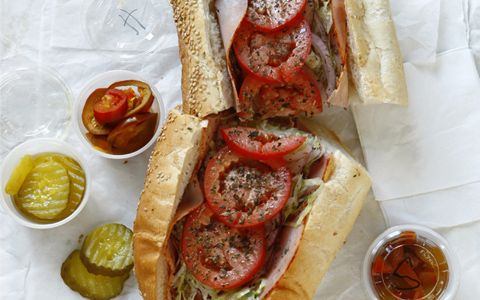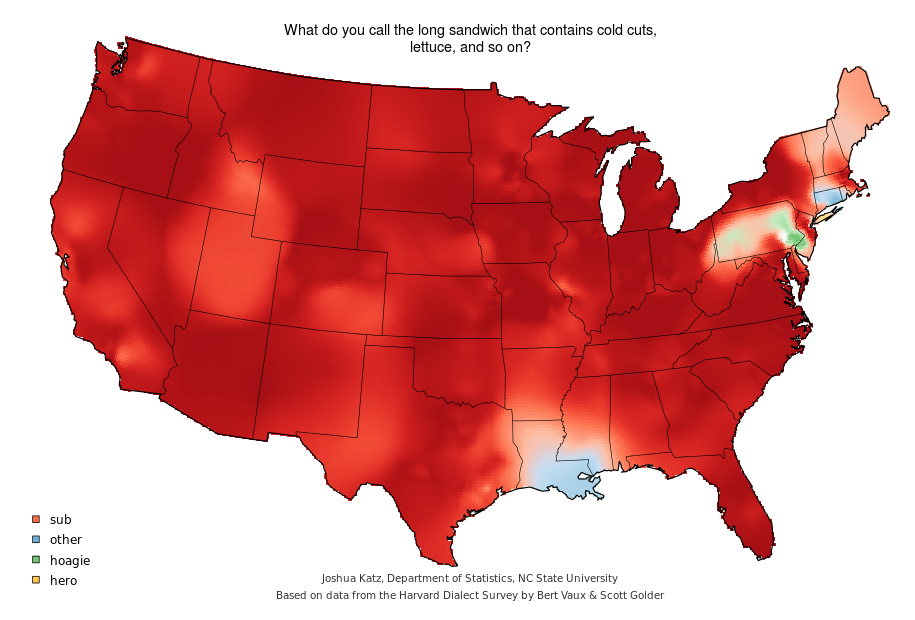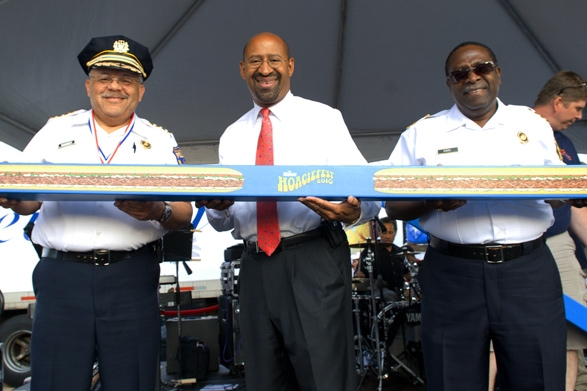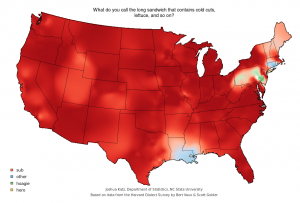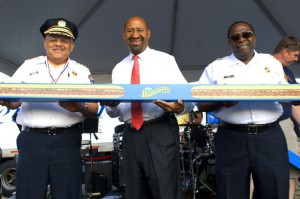Hoagies
By Mary Rizzo
Essay
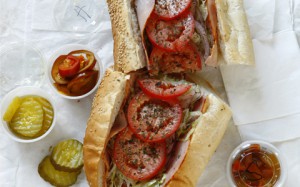
A hoagie is a sandwich made on a long Italian roll containing a variety of Italian meats and cheeses, lettuce, tomato, and onion, and dressed with olive oil, vinegar, and spices. Its exact origins are uncertain, but by the end of the twentieth century a mayoral proclamation declared the hoagie to be the “official sandwich” of Philadelphia.
Known outside of the Philadelphia region as a submarine sandwich, a grinder, or a hero, according to the Oxford English Dictionary the word hoagie did not come into common usage until 1967. However, within the region people were using the term as early as the 1930s, and it appeared in the Philadelphia City Directory for the first time in 1945. In 1950, a letter to the New York Times from a tourist to Philadelphia from Baltimore noted that the sandwich he recognized as a grinder was being referred to as a hoagie, hoggy, horgy, or hogy.
These alternative names give some clues to the hoagie’s still-mysterious origins. Some people have argued that the name derives from the Italian laborers who worked at southwest Philadelphia’s Hog Island during World War I and brought the sandwiches with them for lunch. The nickname for the laborers—hoggies—was applied to the sandwich as well. However, since the name does not appear in print until much later, this story seems unlikely. Another variation is that Italian street vendors, known as “hokey pokey” men, sold them, so that hoagie is actually a corrupted version of “hokey pokey.” The most widely accepted explanation, however, is that Al DePalma, a former musician, used the name at the sandwich shop he opened in 1936. Years before, he had seen a friend eating the large sandwich, and thought that he’d have to be a hog to finish it. DePalma called his sandwiches hoggies, but his customers pronounced them “hoagies.”

Whatever the source for the name, the sandwich is a connection to the region’s Italian immigrant heritage. When large numbers of Italians immigrated to the Northeast in the early twentieth century, many were motivated to do so by the hunger and poverty of their lives in Italy. In the United States, although they were still poor, they had access to better quality food and more meat than ever before. As one Italian immigrant wrote in a letter to his brother, still in Italy, in America “il pane e’molle, ma la vita e’dura” (“the bread is soft, but life is hard”). The hoagie’s excess, with its layers of meat and cheese and its sheer size, is a result of this newfound culinary abundance.
By the late twentieth and early twenty-first century, the hoagie had become representative of the Philadelphia region, eaten by all ethnicities and races. In 1992, Mayor Ed Rendell named the hoagie the Official Sandwich of Philadelphia. The convenience store chain Wawa has embraced the sandwich, and for years has sponsored a summer marketing campaign it calls hoagiefest. In 2014, the observance included an exhibit on the history of the hoagie at the National Constitution Center. Regional chain stores like Wawa and mom and pop delis and sandwich shops have helped ensure that the name remains dominant in the region.
Mary Rizzo is co-editor of The Public Historian and Public Historian in Residence at the Mid-Atlantic Regional Center for the Humanities at Rutgers University-Camden. (Author information current at time of publication.)
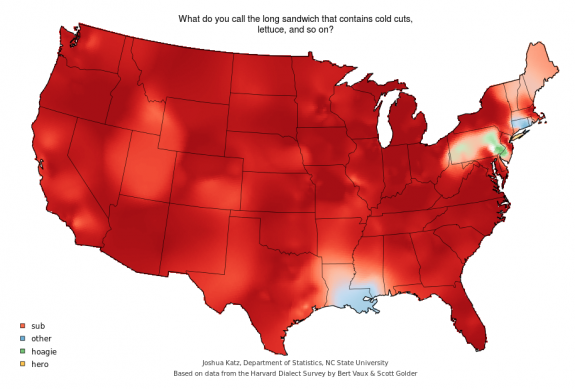
Copyright 2014, Rutgers University
